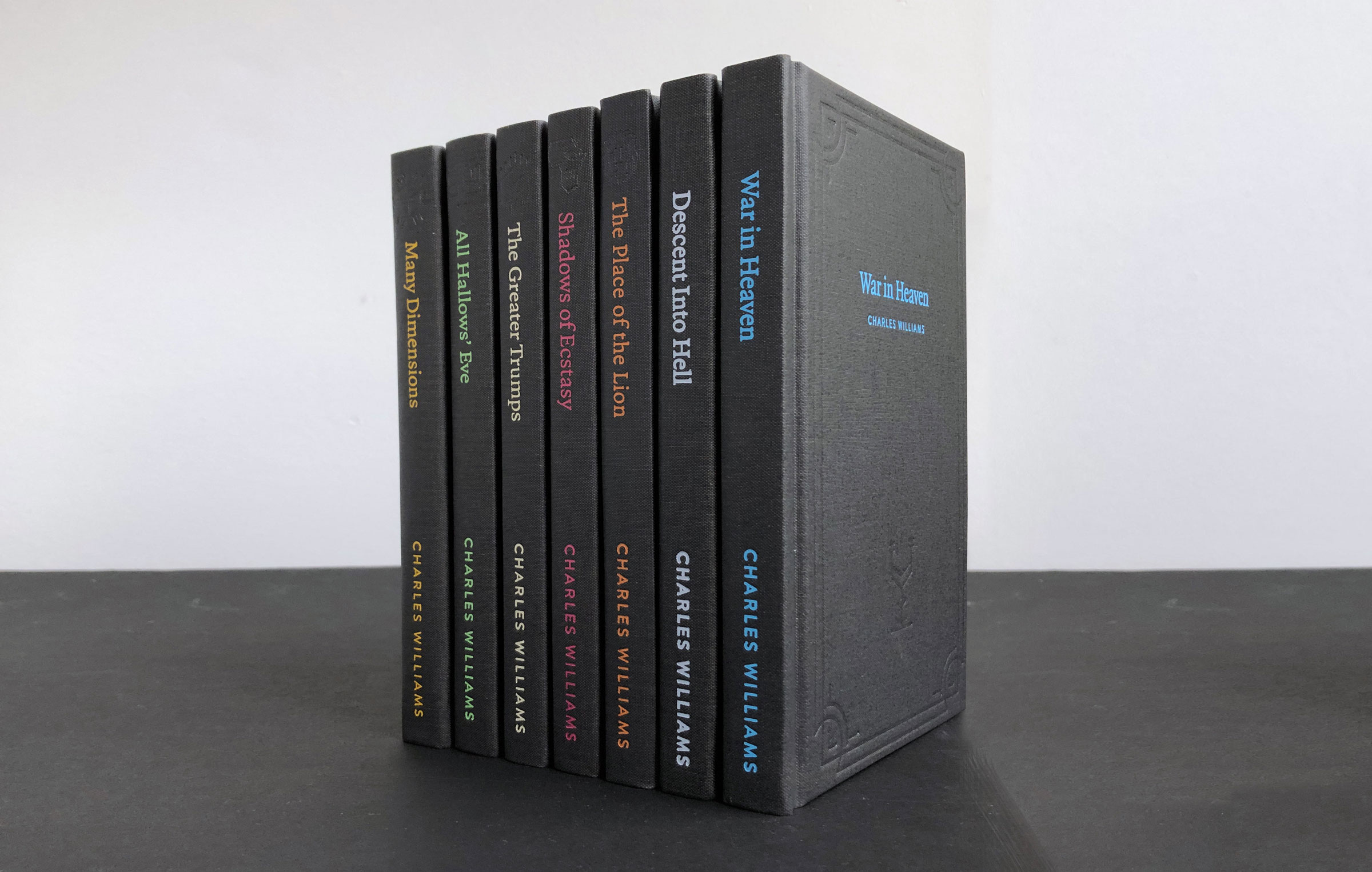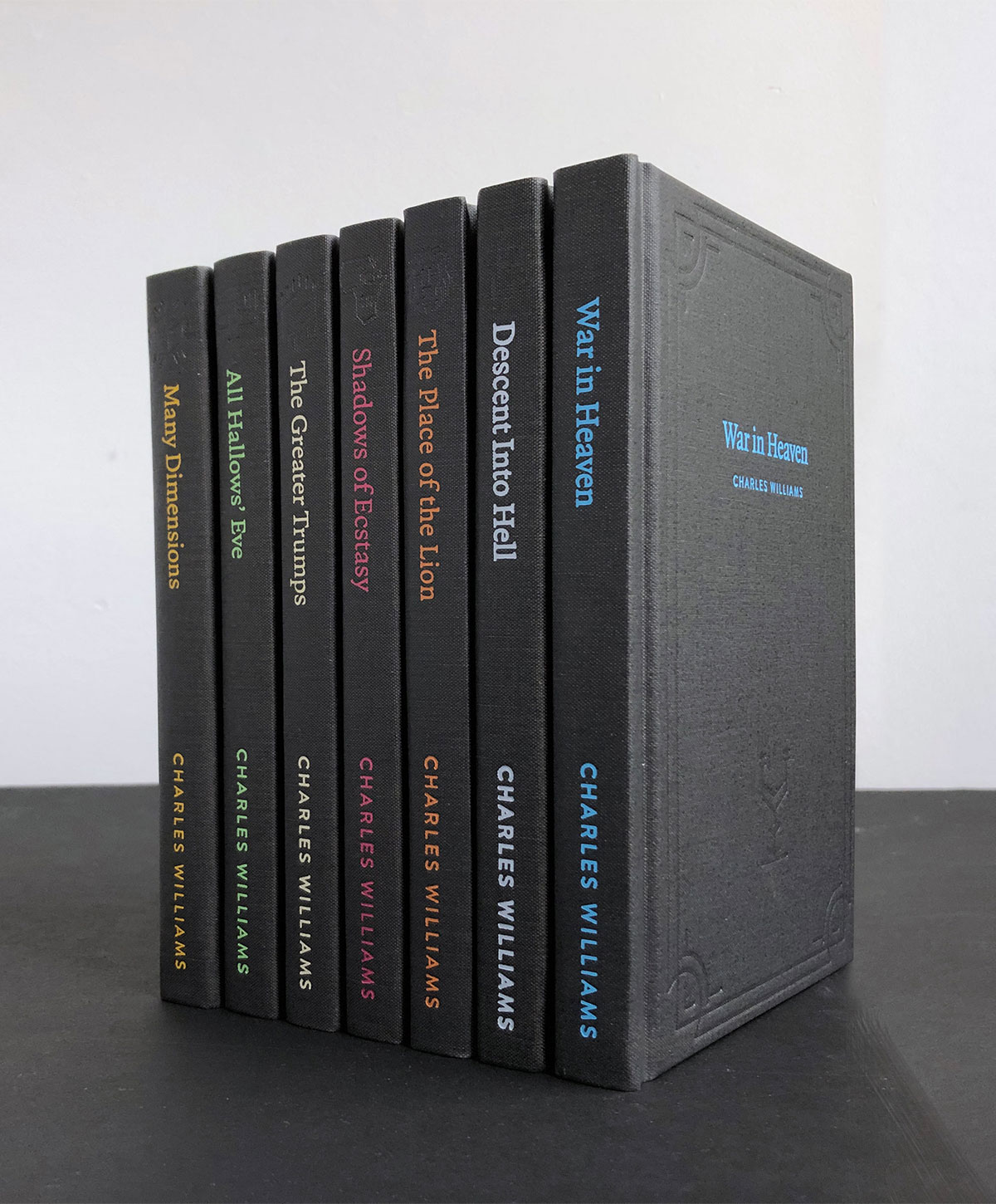Charles Williams Books In Print
Charles Williams was a prolific writer, and many of his books are at present out of print. However, his novels are currently published in the United States or Canada (and should be available in other countries as well).
War in Heaven, the first of his novels to be published (in 1930), begins as a detective story (and indeed the investigation of the original murder is going on all through the book). But there turns out to be far more involved than murder – the discovery of the Holy Grail in a country church, a Black Mass, and the complete disappearance of a London chemist’s shop; and the solution of the murder is helped on by Prester John…
Many Dimensions (1931) also involves the reappearance of a long-lost talisman, this time the Stone of Solomon, which turns out to have extraordinary powers over space and time (but using the latter has unexpected results!), as well as powers of healing. The book’s climax is a kind of judicial hearing by the Lord Chief Justice on what should be done with this thing; justice and law are prominent themes in the book – which is also both a thriller and at times a satire, as various parties try to get their hands on the Stone.
Descent into Hell (1937) is perhaps the most difficult of Williams’s novels; through it run themes dear to Williams’s heart, like poetry and the “Doctrine of Exchange” – as well as the self-destruction of a human soul.
All Hallows’ Eve (1945), the last novel Williams ever wrote, opens with what must be one of the creepiest openings of any book, with a young woman wandering alone through the streets of London, and making a discovery which takes even the reader aback.
Shadows of Ecstasy , the first novel to be written (though not published till 1933) deals with an invasion of Europe from Africa and a kind of superman who denies that he is Antichrist, but who looks uncommonly like him.
The Greater Trumps (1932) has the original set of Tarot cards coming into the possession of an English legal official, with devastating results, of which the threat of a universal snowstorm is only one. Williams’s use of symbolism is close to its highest here.
And The Place of the Lion (1931) was instrumental in bringing about the friendship between Williams and C. S. Lewis. It starts with the escape of a lioness from captivity and her mysterious disappearance… It also embodies Williams’s teachings about the affirming and denying of images.
War in Heaven, Many Dimensions, and Descent into Hell are now available in one volume, A Charles Williams Reader, published in the United States by Eerdmans.
The other four novels have recently been republished by Regent Publishing of Vancouver, Canada, who have already reissued his unconventional “history of the Holy Spirit in the Church”, The Descent of the Dove and are about to reissue his Collected Plays (due out December 2005). All Hallows’ Eve includes an introduction by T. S. Eliot. They can be accessed through their website at www.regentbookstore.com.
Williams’s most important poetry, the Arthurian cycles Taliessin through Logres and The Region of the Summer Stars together with the earlier cycle, The Advent of Galahad, and some later, unfinished poems, are available in the series Arthurian Poets,edited by D. L. Dodds, and published in the United Kingdom by D.S. Brewer(aka the Boydell Press) (1991). The same firm also publish his great book on Dante, The Figure of Beatrice, originally issued by Faber and Faber in 1943. It was this book which inspired Dorothy L. Sayers to translate Dante’s “Divine Comedy”.
Apocryphile, of Berkeley, California, have just reissued five of Williams’s most important non-fiction prose works. These are The Image of the City a collection of Williams’ essays and articles;The Figure of Beatrice, already mentioned; his studies of the Incarnation and of forgiveness, He Came Down from Heaven and The Forgiveness of Sins (one volume); the early work Outlines of Romantic Theology, in which he sets out his ideas about the relationship of religion and romantic love; and Witchcraft, less a study of witchcraft itself as of the Church’s attitude towards it over the centuries. Apocryphile have also reprinted three collections of Williams’s earlier poetry, Divorce, Poems of Conformity, and Windows of Night. For details see Apocryphile’s own website.
Another American publisher, Wipf and Stock of Eugene, Oregon,, has reissued Williams’s biograhy of James I and two books of literary criticism, ‘The English Poetic Mind’ and ‘Reason and Beauty in the English Poetric Mind’.
In 1991 the Society itself published a small book of commentaries on the Arthurian poems by people who had known Williams or studied under him. A few copies are still available from the Society at 44 Plantation Road, Oxford, OX2 6 JE.
Recent articles in the Society’s Newsletter include ‘The Quest for Integration’ by Dr Gavin Ashenden; ‘Charles Williams and the Arthuriad; Poetry as Sacrament’ by Dr. Glen Cavaliero; ‘Striving to Achieve Harmony’ by a Russian member, Olga Markova; and ‘Charles Williams and Magic’, by Edward Gauntlett.
Some of the most recently published Williams books are completely new. One is To Michal from Serge, wartime letters from Williams to his wife, edited by Roma A. King, Jr., and published by the Kent State University Press. Another is a collection of Williams’s reviews of detective fiction during the 1930’s, edited by Jared Lobdell, and published in the United States by McFarland and Co.
The New Christian Year, his anthology of excerpts from earloier writers – from the Fathers to Karl Barth – has recently appeared on the internet as a “blog” by courtesy of Mr. Tom Wills.
Among recent studies of Williams may be mentioned Stephen Dunning The Crisis and the Quest: A Kierkegaardian Reading of Charles Williams: Paternoster Press, 2000. (“An insightful, challenging examination of an important, often overlooked author and Christian thinker.” Charles Franklin Beach, professor of English at Nyack College, Nyack, NY). Williams was one of those chiefly responsible for introducing Kierkegaard to an English readership.


